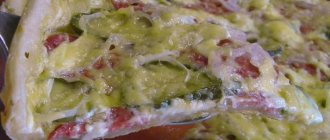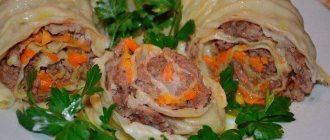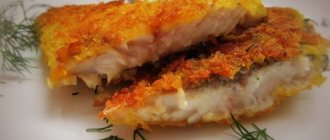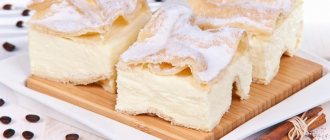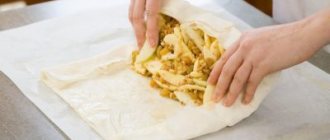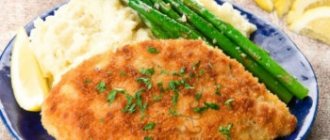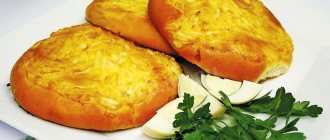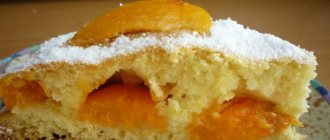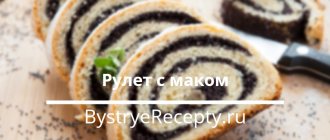In Turkey, Egypt, Tunisia and other eastern countries, there will definitely be chefs who will reproach the Italians for plagiarism and add: “Lahmacun is Turkish pizza.”
If you take a closer look at the intricacies of preparing Turkish fast food, housewives of Slavic origin will recognize lahmacun as pancakes with toppings or open pies - there are too many similarities in the ingredients.
Lahmacun has many variations in its preparation in every Turkish family, like pilaf in Asia or borscht in Slavic cuisine.
Turkish and Armenian lahmacun, Italian pizza: similarities and differences
If we remember how closely the cultures of ancient civilizations were intertwined during the time of the Roman Empire, the greatness and prosperity of Persia, Carthage (Tunisia), Egypt, Ancient Greece and the Ottoman Empire, then it is not surprising that lahmajun or “meat with dough” (لحم بعجين - lahm bi-adzhin - translation from Arabic) is considered by many peoples of the Balkans, the Middle East, and Africa as their national dish.
The names of the dish are different depending on the language, and the filling in each national cuisine is different (its diversity is associated with the climate and religious canons, with the wealth of the family and its tastes).
The recipe for Italian pizza quickly spread around the world, thanks to its “democratic” nature:
- any type of meat or sausage, as opposed to Turkish (or Muslim) pizza;
- a variety of cheeses for which all provinces of Italy are famous;
- mushrooms that have only entered the menu of secular but Muslim Turkey in recent decades to please the tastes of European tourists.
As for vegetable components and spices, nature has not deprived these territories of heat, and therefore tomatoes, peppers, and spicy spices are present in both Turkish lahmacun and Italian pizza, but adjusted for taste preferences.
The Italian filling contains basil, oregano, olives, tomatoes, peppers - a soft and light combination, sunny, elegant, without emphasized spiciness.
Eastern sophistication looks different: garlic, hot onions and sweet peppers, mint, dill, parsley, cilantro, tomatoes. Turkish cuisine is not complete without culinary tricks (we’ll talk about some of them in the recipe below).
“Lamajo” (also pizza, but in Armenian) almost exactly repeats the recipe for unleavened wheat flatbread with meat. The dish is usually served with a salad of fresh vegetables, matsoni (natural yogurt), and Armenian okroshka.
And in some families, the vegetable salad is placed on a hot flatbread, lightly greased with matsoni and rolled like a shawarma, or folded in half so that the lahmajun looks like a cheburek.
Some tips
Finally, a few recommendations for housewives who decide to pamper their family with delicious lahmacun.
- The Arabic pizza recipe states that the rolled out dough should be brushed with milk. However, in reality it is not necessary to do this, but it is thanks to this simple trick that the cake turns out softer and more tender. But for those who want to get a crispy base as a result, it is better to refuse this event.
- The amount of flour used may differ significantly from that indicated in the recipe, so control it yourself. This is explained by the quality of the flour itself and, of course, the size of the glass you use when preparing the dish. Keep in mind that by the end of kneading you should have a fairly soft dough that will not stick to your hands.
- It is best to use warm water. First of all, this is necessary for faster activation of yeast. In addition, the dough prepared in warm water will be more tender and soft.
- In order for the cake to be crispy, but not too hard, the flour must be sifted, thus eliminating lumps.
- Dry yeast can be replaced with ordinary yeast in briquettes, but it will take much longer to activate. And if the dough does not sit for the allotted time, it may not rise, which is why the cake will turn out to be too hard and flat.
- The composition of lahmajun can be changed as desired. For example, rather fatty lamb can be replaced with a lighter, dietary variety - chicken, veal or turkey. In addition to onions and tomatoes, the dish can be supplemented with other vegetables, for example, garlic, carrots, eggplant, cucumbers or cabbage. In addition, the finished lahmajun can be sprinkled with ordinary hard cheese or feta cheese.
You can quickly prepare Turkish lahmajun using pre-prepared or purchased yeast dough. So you will need no more than half an hour to serve Turkish pizza. Be sure to try cooking Turkish lahmacun - you and your family will definitely love this dish!
Cooking technology
Another fundamental difference is the pre-processing of products. Italian pizza originally existed as a poor man's food. For the filling, not fresh minced meat was used, but all the products that were in the house: the leftover meat, cheese, fish, vegetables after dinner were cut into pieces and laid out on the dough base in layers, smearing them with sauce. Poor people did not always have meat, so the filling in the Italian version is more varied.
Be sure to read: Gözleme: what it is, how and what to serve it with, dough recipe, possible fillings, step-by-step preparation
For lahmajun you need finely ground minced meat, like for dumplings, which is logical and justified: beef and lamb are red, “heavy” meat that requires either long-term heat treatment, or chopping and marinating.
The marinade for beef and/or lamb is the juice of chopped vegetables, which brings the meat to half-cookiness, which speeds up the cooking process. Sometimes Turkish chefs add cheese “notes” to the combination of meat and vegetables, increasing the similarity between lahmacun and pizza.
Asian and Middle Eastern cuisine differ from Mediterranean and European cuisine in the way they pre-process ingredients. In the first case, the products are crushed more thoroughly, which is due to a thousand-year-old “nutritional philosophy.” One example: food that is coarse and difficult to digest is easier for the body to digest after grinding and fermentation during pickling.
Red meat in its raw form needs such processing, in contrast to the “topping” for Italian pizza, where ready-made meat components are used.
The difference in the technology of preparing flatbreads with meat among different peoples was formed under the influence of everyday life (nomadic tribes and peoples leading a sedentary lifestyle) and other objective factors. In a word, you don’t have to tell, but try, and not be afraid of mistakes: meat with dough, and even with vegetables, baked in the oven or fried in a frying pan, is never tasteless.
Ingredients
Basic
- Flour. The taste and appearance of baked goods depends on the quality of flour. To prepare pide, only high-quality wheat flour without additives or impurities is used. Before use, the flour must be sifted. It’s not just a matter of accidental clogging; when sifting, the flour is loosened and saturated with oxygen. The quality of the test is improving.
- Yeast. You can use dry and briquetted. There is a slight difference in the taste of the dough, but people who don’t know it don’t notice it. You must carefully read the instructions on the bag of yeast and you will not get into trouble.
- Salt is added to the dough and minced meat at the rate of 1 teaspoon per 1 kilogram of base. Red and black pepper are added to any dish, as they say, to taste. However, in this case, less is better than more.
- Meat. Türkiye is a Muslim country. Religion prohibits eating pork. Beef and lamb are used to prepare minced meat. When you add enough onion to the minced meat, the meat becomes much more tender.
- Cheese. Fermented milk, or, as they are called, soft cheeses melt when heated, soak the flatbread and, in combination with butter, give it an incredible taste and aroma.
Traditional is the use of feta cheese or salted cheese. You need to add about a quarter of cheese to the cheese. The filling will become softer and tastier. If feta cheese or cheese is salty, cut them into pieces and soak in cold milk. Adyghe cheese cannot be used; it will remain a curd mass in the flatbread.
Knead the cheese filling with your hands; if necessary, you can add a little butter. It will improve the taste of your baked goods.
Additional
- Greenery. This is a mandatory attribute of Turkish national cuisine. The principle of use is very simple - the more, the better. Greens are used to decorate dishes. If the greens have gone through the entire heat treatment cycle, all of their qualities are irretrievably lost. Therefore, it is added immediately before serving the dish.
- Eggs. Folk cuisine is rational and economical. When preparing soft dough, eggs are not used, but when preparing pide, beaten egg is brushed onto the flatbread before baking. This type of baking looks much more appetizing. In addition, there is a version of pide with egg filling.
- Tomatoes and sweet peppers. These wonderful vegetables will decorate the pide with meat and give it a unique taste, but it should be borne in mind that this is a departure from tradition, and such a dish can no longer be called completely authentic.
“Lahmacun” - a recipe from a Turkish cook
There is no garlic in the ingredient list because the chef who shared his lahmajun recipe finds its smell too strong and unpleasant when roasted. Fans can add, especially if lamb is chosen for minced meat.
The ratio of dough and filling is 1:1. All products for minced meat are to taste, but the minced meat should have a paste-like consistency so that it is convenient and easy to spread on the dough base.
He also suggested an interesting and unusual recipe for the dough: first you need to prepare half of the required mass.
Ingredients:
- Flour 250 g;
- Pressed baker's yeast 20-25 g;
- Warm water (25-30C) 120-150 ml;
- Salt - to taste.
There is no need to add sugar to prepare the dough.
The procedure is as follows:
- Mash the yeast and dissolve in warm water;
- Combine sifted flour with salt;
- Pour the liquid into the flour, knead a soft dough, leave it in the refrigerator overnight, tightly covering a deep dish with cling film.
The next day, prepare the second half of the dough from the same amount of ingredients, keep at room temperature until the volume increases 2-3 times, and then combine with the one that spent the night in the cold. Knead thoroughly, divide into parts of 80, 150 or 270 g - the size of lahmajun, like pizza, is chosen arbitrarily.
Be sure to read: Izmir Bombs
2-3 hours before the dough is finally ready, you need to start preparing the minced meat.
For 0.5 kg of filling you will need:
- Bold lamb and beef (or veal) - in equal parts, total - 2/3 of the mass;
- Sweet and hot peppers;
- Fresh tomatoes (without skin);
- Onion;
- Parsley and cilantro (leaves);
- Tomato paste;
- Salt, ground black pepper - to taste;
- Sugar – 1.5-2 tbsp. spoons.
The promised secret from the cook: sugar in minced meat when baking lahmajun in the oven gives it a caramel taste and smoothes out the spiciness of peppers and onions.
Interesting! In Eastern and Asian “culinary philosophy”, for thousands of years, cooks have adhered to the principle of harmony of four tastes - spicy, salty, sour, sweet, and the addition of sugar to meat in “Turkish pizza” corresponds to the culinary traditions of many Asian peoples.
Preparing the filling and topping:
- Wash, peel, cut the vegetables as desired, and place in a blender. Grind;
- Combine vegetable puree with minced meat, passed through a fine grinder, add spices, mix;
- Refrigerate the filling for a couple of hours, covering the container with film.
Preparation:
- Roll out the dough balls to a thickness of 0.5 cm.
- Thin cakes are greased with minced meat and baked in the oven for 5-7 minutes at a temperature of 220C, or in a cast-iron frying pan, covered, on the stove.
Meat flatbreads become crispy when baked in the oven. They are served hot with lemon slices, which are sprinkled on the surface, or with natural yoghurt, seasoned with fresh cucumbers and mint.
“Lamajo” – Armenian recipe for “Turkish pizza”
There are no fundamental differences. Rather, it is another version of the dough, unleavened (without yeast), and the use of spices “with a Caucasian accent” in the meat filling: in addition to the classic set - tarragon, basil, thyme, dill.
Armenian pizza has garlic. Both Armenian housewives and professional chefs of national cuisine unanimously declare that even in those days when Turkey was not yet a republic, the most delicious lamaj with garlic was prepared on every street of Yerevan, liberated from the Ottoman Empire.
Ingredients for the dough:
- Flour (including for dusting) 1 kg;
- Vegetable oil 100 ml;
- Water 200 ml;
- Milk (or matsoni) 150 g;
- Salt to taste.
Preparation:
- Combine all liquid dough ingredients;
- Add salt to the sifted flour, mix, and, gradually pouring in liquid heated to room temperature, knead a stiff dough that should easily stick to your hands;
- Transfer it to a container, cover with film, and let rest for a couple of hours;
- Divide into pieces of 150 g, roll out thin round cakes, cover with a napkin.
Be sure to read: How to make baklava at home: what it consists of, secrets, how to make the dough, recipes
Fermented milk products can be omitted and replaced with sparkling water.
For 1 kg of minced meat you need:
- Meat 700 g
- Sweet pepper 2-3 pcs.;
- 2 onions;
- Tomato – 1 pc.;
- Greens – 1 bunch;
- Garlic 3-4 cloves;
- Tomato paste – 2 tbsp. l.;
- Spices: paprika, dried herbs, black pepper and salt - to taste.
Tip: If the filling is not thin enough to coat the tortillas, add water.
Preparation:
- Minced meat and vegetables are prepared as described in the previous recipe;
- The filling is evenly distributed over the number of semi-finished dough products, spread on them, and baked in a preheated cast-iron frying pan for 3-4 minutes, covered.
- Serve with vegetable salad, wrapped in meat flatbreads, in the form of rolls (or shawarma).
Modern young housewives cook lahmajun even faster: they grease pita bread with minced meat and bake it in the oven or in a frying pan. At best, they buy ready-made unleavened dough in the supermarket. It turns out delicious too.
Description with photo
Pide is an open yeast flatbread with an original shape. An elongated oval in the shape of a boat is bordered by sides.
The sides are arranged not for beauty, but in order to keep the filling juicy. The dimensions of the flatbread are determined by the baker.
For a festive feast, pide is prepared large and cut crosswise into portions. On the road, for everyday use, small “boats” are prepared.
In appearance, pide vaguely resembles pizza or pie, or any other open-faced meat or cheese pie. But don’t think that by trying something similar in manufacturing technology, you will become familiar with pide!
There is no point in comparing dishes of national cuisine. They have their own unique taste. And to achieve maximum success, you need to take into account the culinary traditions of the people.
Take note of a few more recipes for delicious dishes: gyuvech, kufta, lahmajun.
